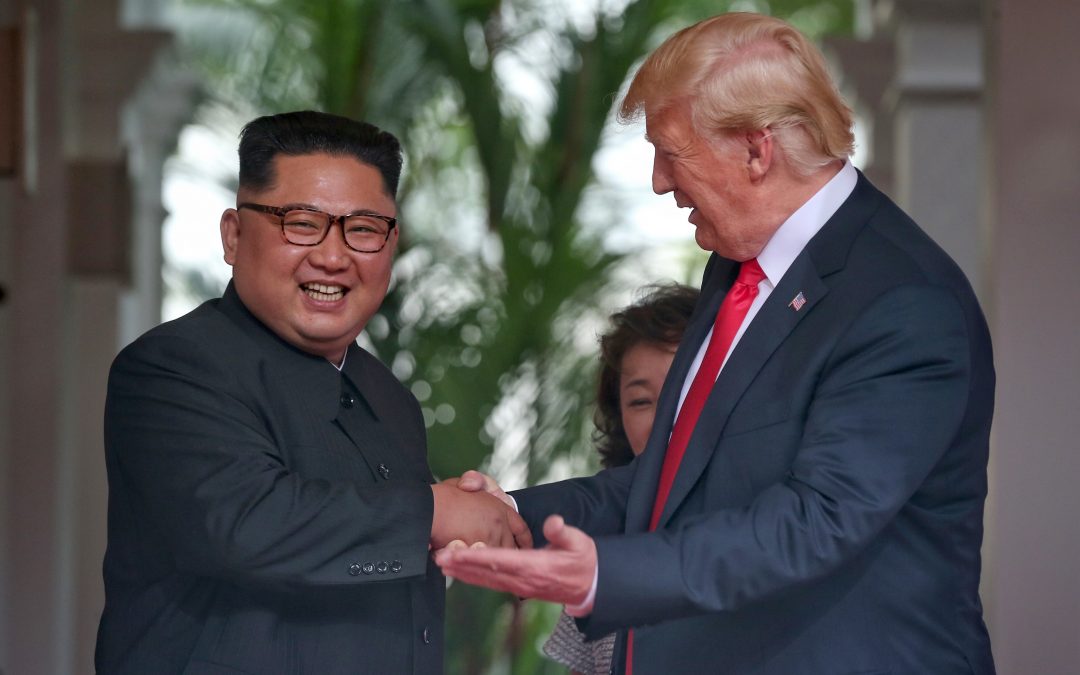Over the past year, there have been handshakes, compliments and extravagant photo-ops—in Singapore, in Hanoi and even at the demilitarized zone separating the two Koreas.
President Trump’s summit diplomacy has raised hopes around the world: Is North Korea now willing to surrender its nuclear arsenal?
Analysts who pore over satellite images of the isolated country paint a different picture: North Korea’s scientists have ramped up production of long-range missiles and the fissile material used in nuclear weapons.
Shipping containers, trucks and crowds of people moving materials and instruments at North Korea’s key weapons facilities like the Yongbyon Nuclear Scientific Research Center and the Sanum-dong missile production site, suggest North Korea has continued producing fissile material and intercontinental ballistic missiles, according to analysts Jenny Town, a fellow at the Stimson Center, a think tank specialized on security issues, and Jeffrey Lewis, a researcher at the James Martin Center for Nonproliferation Studies, a research center analyzing the spread of weapons of mass destruction.
Analysts at the U.S. Defense Intelligence Agency say North Korea’s scientists may have produced 12 nuclear weapons since the first Trump-Kim meeting in Singapore last year.
In total, Pyongyang could currently possess between 20 and 60 nuclear bombs, according to estimates by various security analysts.
Trump has played down evidence gathered by security analysts that North Korea is continuing its nuclear operations, saying in a recent televised interview that Kim “promised he wouldn’t do it.”
North Korea launched two unidentified projectiles on Thursday near Wonsan, an area along the coast, South Korean and Japanese officials said.
The Pentagon did not immediately comment on the launch, but a senior U.S. official said the Trump administration was aware of the reports of a short-range projectile launched from North Korea.
South Korean officials said one of the two missiles flew 430 miles, longer than initially suspected.
South Korea earlier said both missiles flew 270 miles before landing in the waters off the country’s east coast on Thursday.
South Korea’s military later said that it and the United States had determined the second missile flew longer.
It said it still categorized both missiles as short-range. South Korean officials told both the Reuters and AFP news agencies that the second missile launched on Thursday, the one which flew further, appeared to be of a new design, but analysis was still being conducted to confirm that.
It was the first time North Korea had fired projectiles since President Trump and South Korean President Moon Jae-in met Kim Jong Un at the Demilitarized Zone in June.
North Korea has been ramping up the pressure on the U.S. and South Korea over their expected summertime military drills that it views as an invasion rehearsal.
Last week, the North said it may lift its 20-month suspension of nuclear and long-range missile tests in response to the drills.
Trump has considered the weapons moratorium a major achievement in his North Korea policy.
Some experts say the launches are likely a negotiating tactic by North Korea, aimed at expressing its displeasure with the drills in order to get an upper hand ahead of the possible resumption of talks.
North Korea wants to get widespread sanction relief to revive its dilapidated economy, but U.S. officials want the country to take significant disarmament steps before they give up the leverage provided by the sanctions.
It was the first such launch since Seoul said North Korea fired three short-range missiles off its east coast in early May.
Many experts said at the time that those missiles bore a strong resemblance to the Russian-designed Iskander, a short-range, nuclear-capable ballistic missile that has been in the Russian arsenal for more than a decade.
